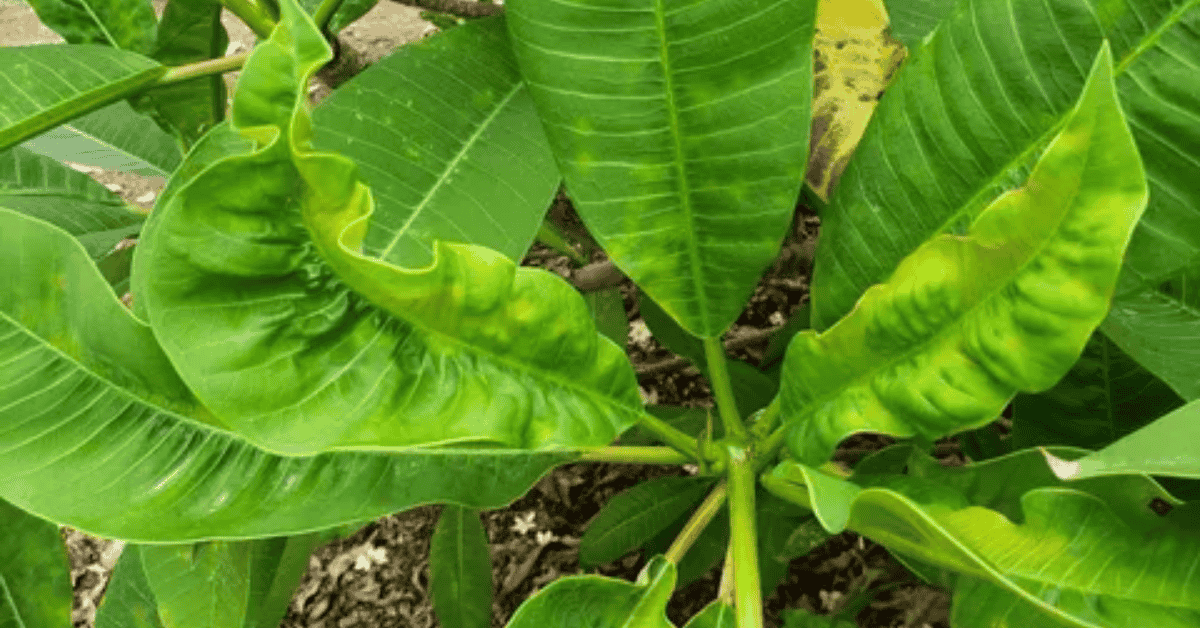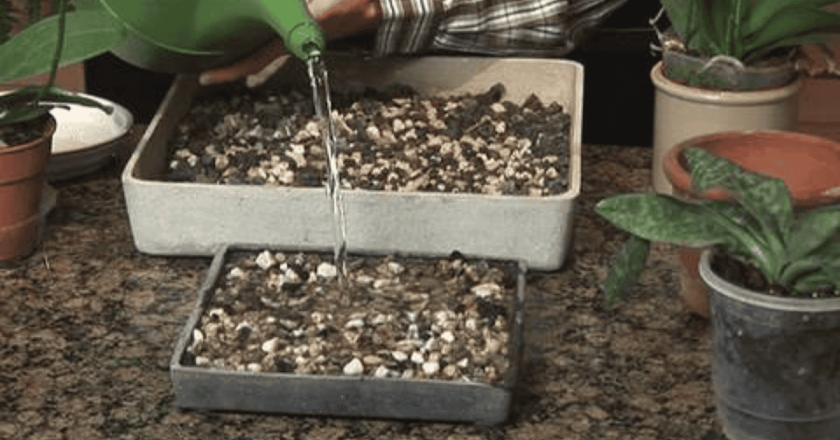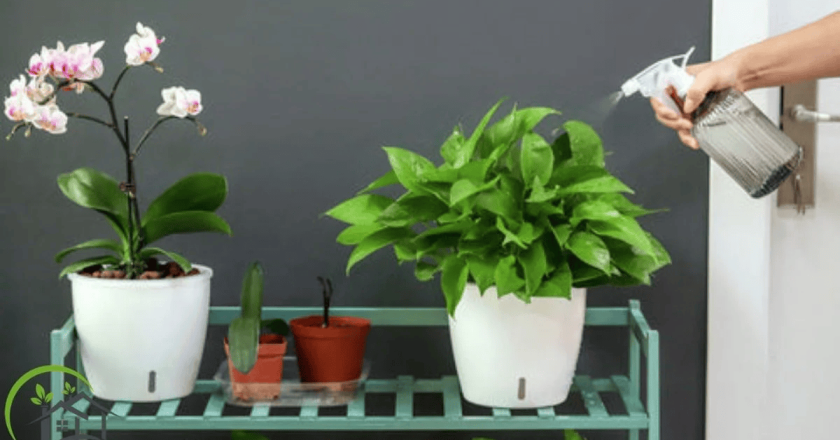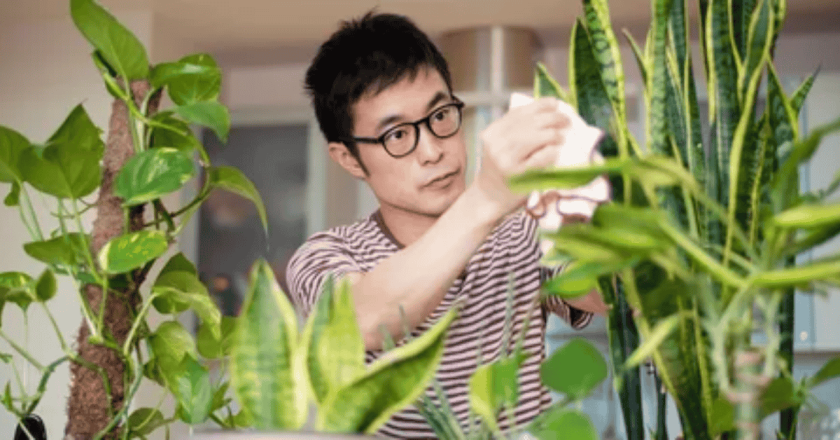If you’ve ever looked at your favorite plant and noticed its leaves curling in, turning brown on the edges, or drooping like they’ve given up on life, you’re not alone. Almost every plant owner, whether beginner or experienced, eventually asks the same question: “What is going on with my plant?”
The truth is, plants often communicate through their leaves. Leaf curl, browning tips, and drooping stems are not random quirks — they’re signals. Sometimes subtle, sometimes dramatic, but always meaningful. And once you learn to interpret them, you’ll feel like you’ve unlocked a secret language between you and your greenery.
This article dives deep into what leaf curl really means, why browning shows up when it does, and how to respond when your plants droop. Along the way, we’ll look at specific leaf curl causes, practical leaf curl treatment, and overall plant care strategies that keep your indoor and outdoor greenery healthy.
Why Do Leaves Curl?
Let’s start with the most obvious question: why do leaves curl at all?
Leaves are the lifeline of a plant. They photosynthesize, regulate water, and even defend against stress. When leaves curl, they’re usually reacting to something in their environment. The most common leaf curl causes include:
-
Water Stress – Too little water, or ironically, too much of it.
-
Temperature Extremes – Heat waves or sudden cold snaps.
-
Pests – Tiny intruders like aphids, mites, or thrips.
-
Nutrient Deficiencies – Lack of calcium, potassium, or magnesium.
-
Leaf Curl Disease – Fungal or viral infections that distort new growth.
Sometimes, it’s more than one factor at play. For example, underwatering combined with strong sunlight can cause plant leaf curl along with crispy, browning edges.
Check out this guide on caring for a Christmas Cactus if you want to see how certain species react uniquely to stress — especially when it comes to watering.
The Many Faces of Leaf Curl
Not all curling leaves look the same, and that’s where careful observation comes in.
-
Upward Curling Leaves on Plants: Often linked to heat stress or too much direct sun.
-
Downward Curling Leaves: Usually a sign of overwatering or nutrient imbalances.
-
Twisting, Wrinkled Curl: Can indicate pests or leaf curl disease.
-
Yellow Curling Leaves: A mix of overwatering, poor drainage, or pest problems.
It’s not always straightforward. Sometimes, I’ve noticed a plant looking perfectly fine one week, and the next, leaves suddenly curl inward while the tips start browning. It feels like it came out of nowhere. But plants don’t really act without reason — they’re just reacting to subtle shifts in their environment.
If you’ve got a Money Tree, for instance, curling can happen when it’s left in low humidity for too long. Here’s a dedicated Money Tree care guide that explains how to keep its leaves healthy.
Browning and Curling: When Two Problems Meet
Curling leaves alone can be stressful to see. Add Browning into the mix, and suddenly it feels urgent. Leaf curling and browning often appear together when plants are facing prolonged stress.
Some likely triggers:
-
Low Humidity Indoors – This is common with tropical plants.
-
Mineral Build-Up – Excess fertilizer salts in soil damage roots.
-
Direct Sun Scorching – particularly for shade-loving plants.
-
Chronic Overwatering – Suffocates roots, leading to both browning and curling.
When you see leaf browning and curling, think of it as your plant waving a red flag. It’s saying: “Hey, I can’t keep up with this environment anymore.”
If this happens in your bathroom plants (which often sit in varying humidity), you might want to see this list of 33 best plants for your bathroom. The right choice of species can reduce the chances of browning and curling altogether.
When Leaves Droop Instead of Curl
Another common worry: the droopy look. Unlike leaf curl, where leaves twist or fold, drooping is about structure. Plant drooping leaves mean the plant’s turgor pressure — basically its water balance — is off.
Typical plant stress signs leading to droop include:
-
Underwatering (the classic reason).
-
Overwatering (roots suffocate, same end result).
-
Root Bound Conditions (too little soil in pots).
-
Sudden Light Changes (moving a plant from shade to sun).
Drooping plants can look tragic, but the good news is that they’re often reversible with quick intervention. A peace lily, for example, famously droops dramatically when thirsty — but within hours of watering, it springs back up. Here’s a peace lily care guide that walks through exactly how to manage those swings.
Indoor vs Outdoor Leaf Curl
The environment plays a huge role in whether you see indoor plant leaf curl or outdoor plant leaf curl.
-
Indoors: Curling often ties to humidity, light placement, and inconsistent watering.
-
Outdoors: Curling is more frequently linked to pests, weather extremes, and soil nutrient imbalances.
It’s fascinating, really. A snake plant indoors, for example, rarely curls unless it’s severely underwatered. But outdoors, exposure to intense sun and heat can make even a hardy species like Sansevieria struggle. Here’s a snake plant care guide that shows how adaptable (yet sensitive) they can be.
How to Fix Leaf Curl: Remedies That Actually Work
Now for the practical part — how do you actually deal with leaf curl?
Here are some curling leaves remedies that help in most cases:
-
Check Watering Habits – Consistency is key. Don’t let soil swing between bone dry and soggy.
-
Improve Drainage – Repot with a mix that doesn’t compact too tightly.
-
Adjust Light – Too much direct sun? Shift to filtered light.
-
Inspect for Pests – Flip the leaves; tiny mites and aphids hide under them.
-
Feed Wisely – Use balanced fertilizer in moderation to avoid nutrient burn.
-
Prune Damaged Leaves – Helps redirect energy to new growth.
-
Boost Humidity – Group plants together or use a small humidifier.
When you apply these steps, you’re essentially offering a leaf curl treatment that addresses both the symptom and the root cause.
And if you’re building a low-maintenance collection, choosing species less prone to these problems makes life easier. Here’s a great list of low-maintenance outdoor plants that won’t demand constant troubleshooting.
Common Plant Leaf Problems Beyond Curling
Curling and browning are big ones, but they’re just part of a broader spectrum of common plant leaf issues. You might also see:
-
Yellowing leaves
-
Fungal spots
-
Wilting
-
Pitting or mottling from viruses
The important part is recognizing patterns. For example, yellow curling leaves may suggest nutrient problems, while solid yellowing (without curling) could just mean natural leaf aging.
If you’re curious about adding plants that resist many of these leaf problems, this list of 35 low-maintenance plants is a great starting point.
Building a Resilient Plant Collection
It’s easy to get discouraged when leaves misbehave. But resilience starts with plant choice and environment.
-
Office Plants: Some are naturally tough, making them perfect for people who might forget the occasional watering. Here’s a list of the 35 best office plants.
-
Oversized Indoor Plants: These make a statement, but they need stable conditions. Here are 20 oversized indoor plants that thrive with proper care.
The point is, the more you align your plant choices with your lifestyle, the fewer emergencies you’ll face with curling leaves solutions and drooping leaves care.
🌱 Key Takeaways
-
Leaf Curl is a signal, not a death sentence. Most of the time, it points to water, light, pests, or nutrients — not something irreversible.
-
Curling plus browning = stress overload. When both happen together, think of it as your plant asking for urgent help.
-
Drooping doesn’t always mean disaster. Often, it’s just a water imbalance, and with quick action, plants bounce back.
-
Indoor and outdoor plants curl for different reasons. Indoors, it’s humidity and light; outdoors, it’s pests and weather extremes.
-
Prevention beats treatment. Picking resilient species and matching care to your lifestyle reduces future problems.
🌿 Final Thought
Plants really do talk — not in words, but through their leaves. Leaf Curl, browning, and droop are just their way of showing what they need. And while it can be frustrating to decode at first, with time, you start to notice patterns. I’ve found that once you pay closer attention, you’re not just keeping plants alive — you’re growing alongside them.
❓ FAQs
1. Why do my plant’s leaves curl inward?
Leaves often curl inward when the plant is stressed by heat, pests, or inconsistent watering. It’s the plant’s way of conserving energy.
2. Can leaf curl disease be cured?
It depends. Fungal or viral leaf curl disease can’t always be reversed, but you can slow its spread by pruning infected leaves and improving overall care.
3. How do I fix yellow curling leaves?
Check your watering first — overwatering is a major cause. If that’s balanced, look at nutrients like nitrogen and potassium, which help prevent yellow curling leaves.
4. What’s the difference between drooping leaves and curling leaves?
Drooping usually means water imbalance (too much or too little). Curling is often tied to pests, heat, or nutrient deficiencies.
5. Which plants are least likely to suffer from leaf curl?
Hardy, low-maintenance species like snake plants, money trees, and certain office plants rarely show severe plant leaf curl when cared for properly.




